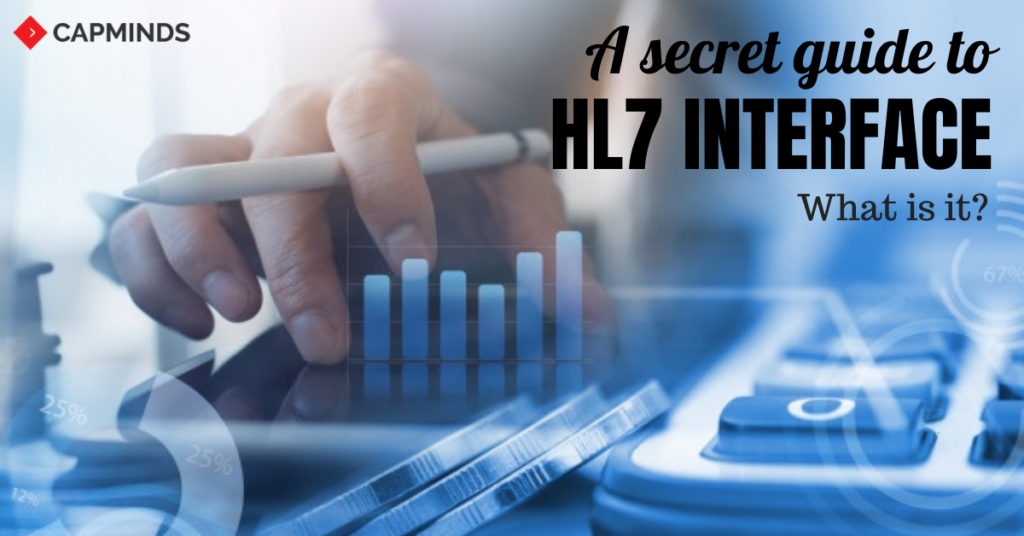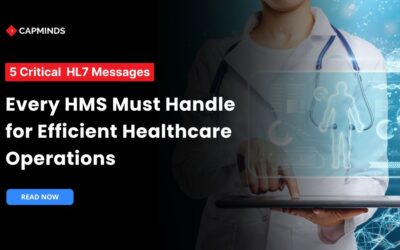A Secret Guide To HL7 Interface: What Is It?
If you are new to HL7, this guide to the HL7 interface helps you to explore the evolution of HL7 and about HL7 interface, its advanced categories to easily understand the concepts of HL7 on a deeper level.
What is HL7?
HL7 is the most commonly used health data standard created by Health Level Seven International, a non-profit organization dedicated to developing standards for the exchange of electronic health care data.
HL7 is defined as the set of data standards used to transfer and share data between various healthcare providers. The data structure and coding of data elements will be transferred from one EHR or clinical application to another within or outside a healthcare organization.
The major advantage of HL7 is that it makes the implementation of interfaces easy, and it reduces or eliminates the need to create custom interfaces between clinical applications.
In simple words, HL7 bridges the gap between health IT applications and simplifies healthcare data sharing, and makes it more efficient when compared to previous methods.
Why HL7?
Today most healthcare providers make use of various software for billing, patient record maintenance, updating patient data, etc. The major problem is that communication between the software is very hard to achieve, even though they often need to talk to each other.
And also, there will be some problems when two healthcare providers need to share information.
HL7 provides several standards and guidelines to help software vendors and healthcare providers store and uniformly move data.
In this way, the applications can use the information without the help of special software for conversions. In simple, HL7 makes data sharing easy, which reduces the administrative burden on providers while improving care delivery.
What is the HL7 interface?
The HL7 interfaces can be defined as two terminologies ‘HL7’ and ‘interface’. HL7 is utilized by healthcare organizations to enable messaging between clinical applications.
The term interface is defined as interconnection or communication between those applications or systems. It is necessary that the healthcare application vendors need to provide a means within their application for this interaction to take place.
Healthcare providers will use the HL7 interface specifications for the various message types as a starting point and also will expose input and/or output interfaces for their application. An HL7 interface includes:
- Export endpoint: For the sending application
- Import endpoint: For the receiving application
- Method: For moving data between two applications
All these 3 elements will together form an HL7 interface.
Hl7 standards – An overview
HL7 provides a framework for data exchange and storage. It accomplishes this by defining how the data is packaged and moved including defining the language, data type, and structure of the data. The main goal behind the usage of HL7 standards is seamless integration between any systems used.
While HL7 falls short of this goal, these standards represent a milestone towards interoperability and laid the groundwork for developing the more open and extensible Fast Healthcare Interoperability Resources (FHIR) as well as the adoption of APIs for health IT.
RELATED: FHIR success story: A large healthcare company’s experience with CapMinds HL7 FHIR services
HL7 is broken into seven parts. Each section has a purpose and defines a new set of rules that may build on the previous set of standards.
- The first section defines the standard system integrations and compliance methods. These are the primary standards and possibly the most popular among the categories.
- The second one states to define the standards and technology infrastructure the users plan to use.
- Section three of HL7 helps to link messaging and document standards for providers.
- Section four explains the details of electronic health records (EHR), like how they are constructed and managed using profiles and models.
- The fifth section outlines the important methods used for implementation and also includes support documents for other categories.
- Section six explores the rules and references used to develop programming structures for software and aids in standards development as well.
- Section seven provides the information that educates both the users and provides on the developmental tools and the adoption of HL7 standards.
Why Was HL7 Created?
Before the development of HL7, the process of data exchange between healthcare systems was very difficult. The data exchange process required a great deal of programming on the side of both the sending and receiving applications.
These interfaces were costly in light of the fact that there was no standard assortment of patient attributes. Accordingly, during the 1980s, the number of clinical interfaces in a typical hospital was little and the expense per interface was high.
HL7’s prime goal is to simplify the implementation of interfaces between medical care software applications and different vendors to diminish the cost engaged with custom interface programming.
HL7 Interface Challenges
The adaptability that permits various situations to use various versions and parts of HL7 can likewise make interfacing between unrelated frameworks incredibly troublesome.
The key challenge in the HL7 interface is that internal healthcare provider teams and software vendors create new clinical applications. Each and every application is created without necessary information or a joint effort with other application development teams.
The application development teams rarely share restrictive information on how their applications are built, so it is hard for other team members to construct viable applications.
RELATED:
5 HL7 INTEGRATION CHALLENGES YOU PROBABLY DON’T KNOW
TOP 6 SECRET WAYS TO SIMPLIFY YOUR HL7 INTEGRATION
Final Thoughts
The selection of the HL7 standard is allowing for the development of better tools with which to transfer critical data in a simpler and easier manner. This will make every aspect of healthcare more efficient and dynamic and also reduces unwanted issues.
With the emergence of new HIPAA guidelines and legislation, and as more hospitals and clinics consider the regional health information organization model, EMRs improve, and laboratories continue to use the new advanced technologies in their work process.
HL7 will continue to be a basic component in the evolution of healthcare.
Choose CapMinds HL7 FHIR healthcare solutions to improve your interoperability. To effectively convey medical solutions, healthcare applications should be able to share, integrate, exchange, and retrieve data between themselves.
With CapMinds HL7 FHIR services, your data will be available, discoverable, and understandable while maintaining structure and standardization. For more information, visit our website.




